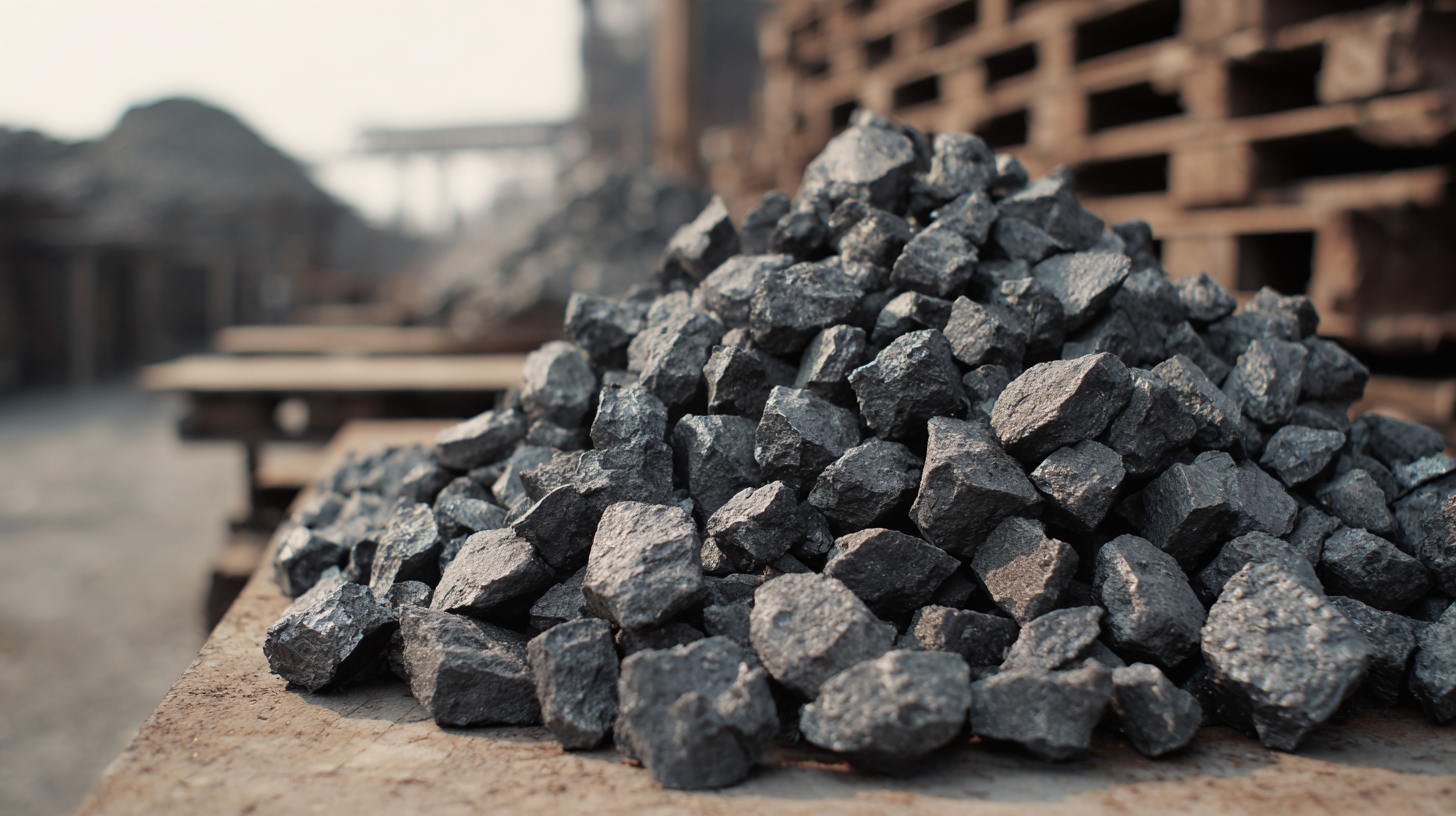 No. 14, Building 2, No. 367 Beijing Road, Chengdu Economic and Technological Development Zone (Longquanyi District)
No. 14, Building 2, No. 367 Beijing Road, Chengdu Economic and Technological Development Zone (Longquanyi District)

 In the competitive landscape of iron ore processing, the efficiency of iron ore screening solutions plays a pivotal role in ensuring high-quality output and operational reliability. As industries increasingly rely on advanced machines and technologies, leading Chinese manufacturers have emerged as key players, offering innovative products that promise not only performance but also outstanding after-sales service advantages. The cost of maintenance is a critical consideration, as it directly impacts the overall profitability of iron ore screening operations. Choosing the right supplier can make a significant difference in minimizing downtime and optimizing maintenance costs, thereby enhancing productivity and long-term sustainability. In this blog, we will delve into the various high-quality iron ore screening solutions available in the market, emphasizing the importance of after-sales support and how it can transform the operational landscape for businesses engaged in iron ore processing.
In the competitive landscape of iron ore processing, the efficiency of iron ore screening solutions plays a pivotal role in ensuring high-quality output and operational reliability. As industries increasingly rely on advanced machines and technologies, leading Chinese manufacturers have emerged as key players, offering innovative products that promise not only performance but also outstanding after-sales service advantages. The cost of maintenance is a critical consideration, as it directly impacts the overall profitability of iron ore screening operations. Choosing the right supplier can make a significant difference in minimizing downtime and optimizing maintenance costs, thereby enhancing productivity and long-term sustainability. In this blog, we will delve into the various high-quality iron ore screening solutions available in the market, emphasizing the importance of after-sales support and how it can transform the operational landscape for businesses engaged in iron ore processing.
 Iron ore screening processes face several key challenges that can significantly impact the quality of the final product. The need for improved techniques in particle classification and separation is essential to minimize waste and enhance the efficiency of ore processing. Factors such as moisture content, particle size distribution, and the presence of impurities play a crucial role in determining the effectiveness of screening operations. Recent advancements in simulation technologies are paving the way for the development of better screening methods, allowing manufacturers to optimize their processes in the pursuit of high-quality iron ore.
Iron ore screening processes face several key challenges that can significantly impact the quality of the final product. The need for improved techniques in particle classification and separation is essential to minimize waste and enhance the efficiency of ore processing. Factors such as moisture content, particle size distribution, and the presence of impurities play a crucial role in determining the effectiveness of screening operations. Recent advancements in simulation technologies are paving the way for the development of better screening methods, allowing manufacturers to optimize their processes in the pursuit of high-quality iron ore.
Tips for optimizing iron ore screening include investing in advanced technologies that utilize digital transformation to enhance energy efficiency and environmental responsibility. Implementing real-time monitoring systems can help identify issues in the screening process early on, thereby minimizing disruptions and improving overall output. Additionally, consistent training and education for operators are essential to ensure that best practices are followed, which can help mitigate the environmental impacts associated with mining operations. Focusing on these areas will not only lead to improved product quality but also foster a more sustainable approach to mineral extraction.
In the iron ore production process, effective screening technologies play a crucial role in separating fine particles from larger ones, ultimately enhancing the overall efficiency of the operation. The comparative analysis of various screening technologies reveals significant differences in design, functionality, and output quality. Traditional screening methods, such as vibrating screens and static grizzlies, have been widely used; however, their limitations in handling large volumes and fine materials have led manufacturers to explore advanced solutions.
Leading Chinese manufacturers are at the forefront of innovating high-quality iron ore screening solutions. For instance, the introduction of high-frequency screens enables enhanced stratification of ore particles, significantly improving the recovery rates of fine iron ore. Additionally, technologies like hydrocyclones and trommel screens offer superior performance in separating materials based on size and density. The adaptability of these technologies allows for customization according to the specific needs of iron ore producers, ensuring that operations are optimized for maximum productivity. These advancements underscore the importance of selecting the right screening technology to meet the evolving demands of the iron ore industry.
Automation has become an indispensable part of the iron ore screening process, significantly enhancing operational efficiency and productivity. According to a report by Mordor Intelligence, the global mining automation market is projected to grow at a CAGR of 6.8% from 2022 to 2027. The integration of advanced technologies such as AI, machine learning, and IoT in iron ore screening processes is transforming how manufacturers manage quality control and throughput. These automated systems not only reduce human error but also improve sorting accuracy, ensuring that only high-quality ore is processed.
Tip: Investing in automated screening solutions can lead to lower operational costs and faster turnaround times, enabling manufacturers to meet increasing market demands effectively.
Moreover, real-time data analytics plays a crucial role in optimizing screening operations. Advanced sensors and monitoring systems provide continuous feedback, allowing operators to make informed decisions and adjustments on the fly. A study by Research and Markets indicates that automation can improve screening efficiency by up to 40%, leading to significant savings in both time and resources.
Tip: Regularly updating your automation technology can result in enhanced efficiency and optimum resource utilization, keeping you competitive in an ever-evolving market.
Iron ore screening operations play a crucial role not only in enhancing the efficiency of mining processes but also in addressing environmental concerns. As the industry moves towards 2025, there is a noticeable shift towards sustainable practices, as seen from recent engagements in advanced technologies that minimize ecological footprints. For instance, iron ore mining companies are increasingly adopting innovative solutions that reduce water usage and emissions, aligning operations with environmental, social, and governance (ESG) criteria. Reports indicate that Australia alone produces over 900 million tonnes of iron ore annually, emphasizing the urgent need for effective screening processes that also consider environmental impacts.
To ensure eco-friendly operations, consider implementing the following tips: firstly, invest in dust suppression technologies to reduce particulate matter emissions; secondly, conduct regular environmental impact assessments to identify and mitigate potential risks associated with screening activities. Additionally, embrace circular mining principles, similar to those being developed by leading manufacturers, which can help minimize waste and promote resource recovery.
Moreover, striking a balance between productivity and environmental stewardship is essential. With the ongoing contracts in the industry reinforcing crushing and screening services, it is vital for companies to adopt best practices that not only boost efficiency but also protect the communities and ecosystems surrounding mining operations. By focusing on sustainable techniques and collaborative efforts, the iron ore sector can thrive while minimizing its environmental footprint.

In the rapidly evolving world of iron ore processing, innovations in screening solutions play a pivotal role in enhancing efficiency and productivity. Leading Chinese manufacturers are leveraging advanced technologies to address common industry problems, such as material degradation, improper separation, and high operational costs. By implementing state-of-the-art vibrating screens and magnetic separation techniques, these manufacturers are not only improving the quality of the iron ore but also minimizing waste and maximizing output.
Moreover, the introduction of automated systems and real-time monitoring has transformed the screening process. These innovations enable miners to respond promptly to fluctuations in ore quality and quantity, thus optimizing the entire production chain. With features such as self-cleaning mechanisms and adjustable screening parameters, modern equipment offers enhanced reliability and adaptability under various operational conditions. As the demand for high-quality iron ore continues to rise, these pioneering solutions are setting new industry standards and driving progress within the sector.